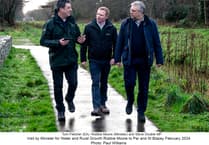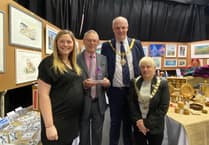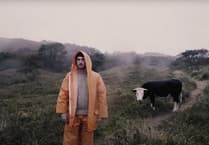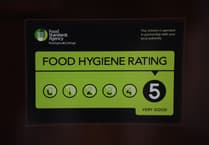“I think people worked out pretty quickly, when they pulled on the strings of their bows, that they could get different sounds from plucking different lengths of string”
Oft-touted as the world’s oldest instrument, the Harp is certainly one of the most identifiable, alluring and mysterious. Weave with this an eclectic blend of cultural influences spanning Cheltenham to Shetland and further yet to The Netherlands, add a modern and innovative presentation with a perfectly leveled tea-spoon of Gaelic charm and you find yourself enchanted by the sublime sound of The Willow Trio.
The Glasgow based Clarsach group formed from the combined talents of Sam Macadam, Sophie Rocks and Romy Wymer, though as can be imagined putting together a Trio of Harpists is not necessarily as simple as posting an advert in the local classifieds a-la Kiss.
“We were actually all standing at an intersection and made eye contact…” jokes Romy, “No, Sam and I went to Uni together. We actually met studying Clarsach, so we know each other from there and we had already started playing as a Harp trio with another friend… But she was living a bit further away and said find a closer person. So we looked on Instagram and we found Sophie.”
“Which is wild” Sophie hastens to add “as I don’t think Instagram is necessarily my favourite place! But it worked wonders, we went for cake.”
When coming up for a name for their newly formed Trio, Sophie recalls, “It was a funny thing, when it came to coming up with a name we were struggling and people have said how it is really clever with the Willow Tree and the wood for making the harp. But for me one of the things, while we were looking for a name, is that I really love Glasgow. I’m a huge fan of Glasgow and for me it was looking at the heritage around Glasgow and Charles Rennie Macintosh Architecture. So he had The Willow Tea-Rooms and I just really loved the font and that was my way of thinking how could we use that font and why it would make sense.”
Though when performing the Trio use the smaller Clarsach Harps, the most commonly associated Harp for most people would be the Pedal Harp and the complexity of these grand instruments cannot be understated.
Sophie poses us a pop-quiz on our Harp knowledge - “A Pedal Harp has 47 strings and the pedals can produce a natural, sharp and flat from each individual string. Would you like to have a guess at how many moving parts there are in a Pedal Harp?” If you guessed over 2000, then we’re wagering you’re either a Harpist yourself, have watched our interview on-demand, or you just snuck a quick web-search under the table.
As you can imagine, between the complex mechanisms housed within twinned with the steep learning curve and understandably high-cost of purchase, maintenance and particularly transportation, The Harp has a perceptively high barrier of entry to most. However, as Sophie highlights “I’m sure there are small-scale systems and I know that with funding cutbacks that gets harder and harder… But we’re very lucky that in Scotland we have a thing called The Clarsach Society where you can rent Clarsach out at very reasonable prices. So I got to rent one before it got round to being time to maybe purchase one. It is not really an instrument anyone would want to purchase to be playing for six months and then decide you’re not so interested in after all.”
Their debut album, Eala Shàilein or The Swan of Salen in English, is an innovative merging of Tchaikovski’s Swan Lake and the traditional Gaelic Swan Of Salen transfiguration story. Having just launched, a supporting mini-tour follows in the coming weeks of April. Of the performances, Romy describes the Trio’s merging of their Live Harps and pre-recorded footage of the accompanying Ballet as being “very easy to take to people who would not otherwise have access to The Ballet or the Music.”
Watch the complete interview with The Willow Trio at https://vision.phluidrecords.co.uk
Listen to their debut album at https://thewillowtrio.bandcamp.com/
Engage with The Willow Trio at https://www.thewillowtrio.co.uk




